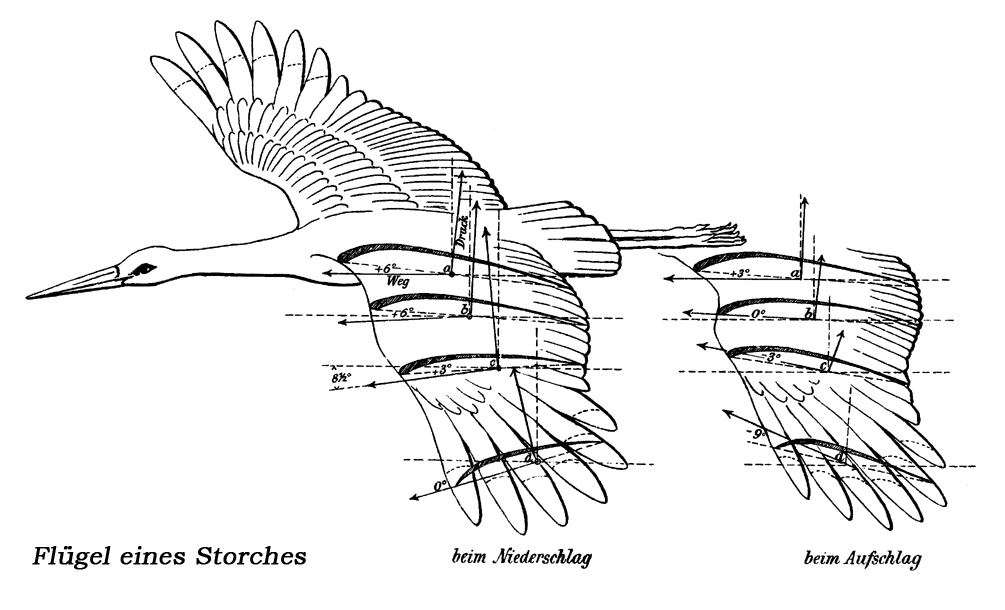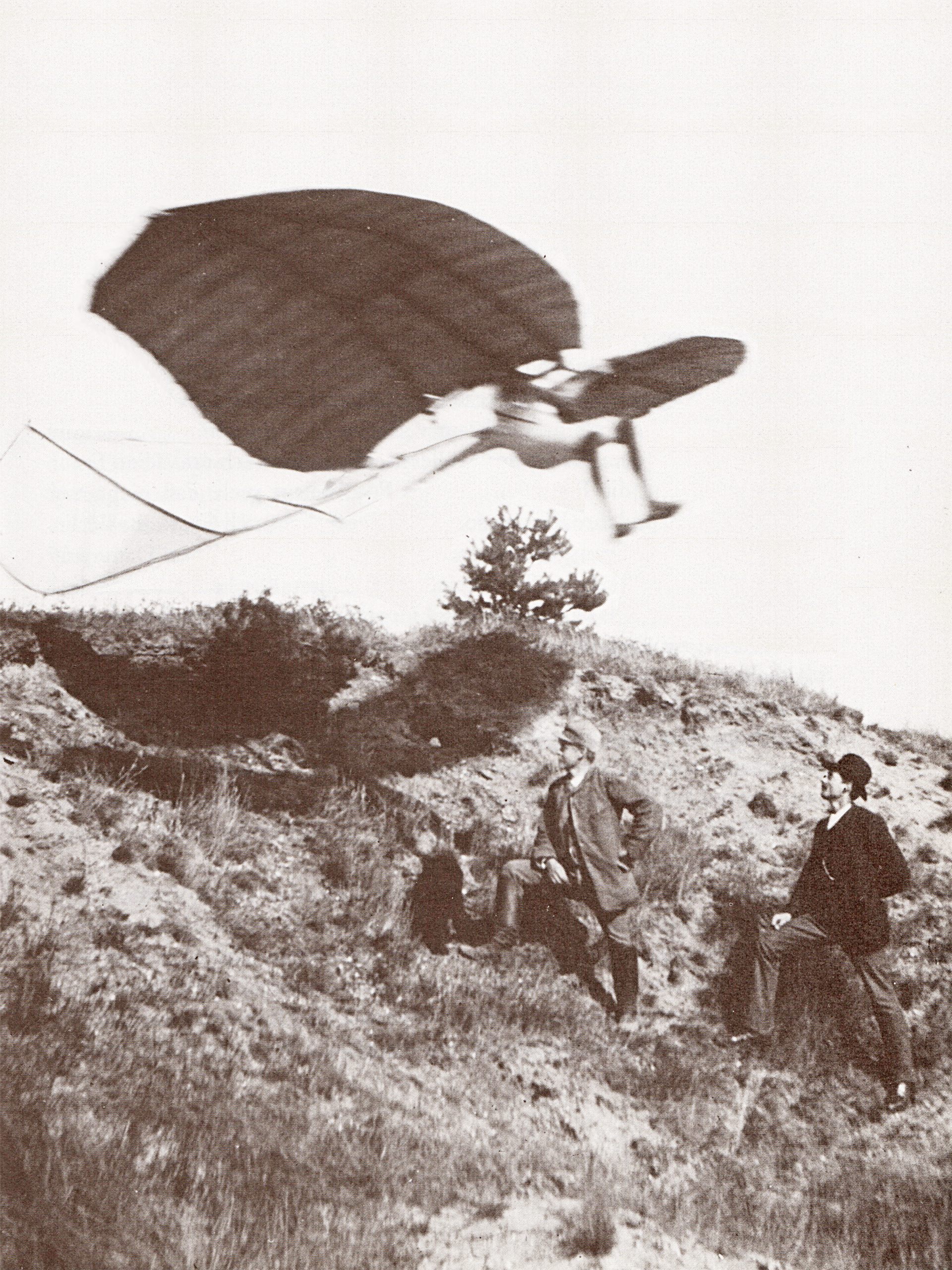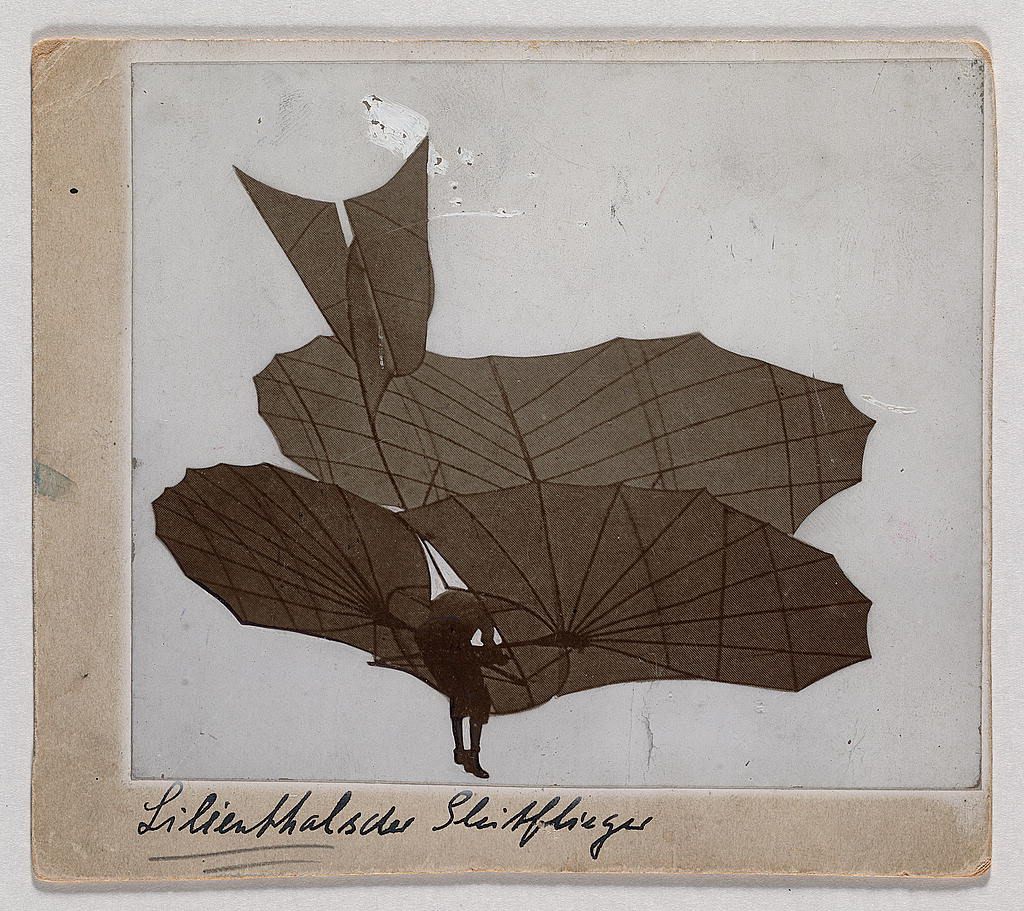The Last Flight of Germany’s Glider King, Who Inspired the Wright Brothers
After kickstarting human aviation, the Glider King died as he lived: trying to fly.

Go, Glider King, Go! (Photo: Library of Congress/ppmsca.02546/Public Domain)
When we talk about human flight the first names to come up are inevitably Orville and Wilbur Wright, who piloted the first powered plane in 1903.
But long before that famous flight, German aviation pioneer Otto Lilienthal, also known as the Glider King, was taking short flights in his homemade craft from his custom launch hill. Unfortunately, it was that same drive to conquer the skies that would lead to his untimely death.
Lilienthal was born in the small Prussian town of Anklam in 1848. He took an early interest in the science of bird flight, and began studying it in grammar school. Working with his brother Gustav, who, as with the Wright brothers, would become his lifelong partner in research and study, Lilienthal began experimenting with human flight by 1867.

Otto Lilienthal (Photo: Jamiri/Public Domain)
The brothers wanted to emulate what they saw in nature and create an apparatus that could mimic the effects of bird wings. Lilienthal tirelessly studied the movement of birds, attempting to divine, from even their slightest action, the secret of their ability to fly. In his book, Bird Flight As A Basis of Aviation, which collected his research and studies in 1889, he described how small birds like swallows are too hard to observe—“they are too small, and their incessant hunting for insects introduces too many erratic movements.”
After leaving grammar school Lilienthal studied mechanical engineering. Following a brief stint in the military, he worked for years as an engineer, never giving up on his dream of flying. In 1883 he opened up his own fabrication shop, which he used, in part, to begin creating the winged apparatuses that he dreamed up. In the beginning, this literally meant crafting huge wood and cloth wings to strap on to his arms.

One of Lilienthal’s breakdowns of a crane. (Photo: Otto Lilienthal/Public Domain)
His first model (of which no images survive) was a big set of wings called the “Seagull,” named after the bird on which he’d modeled the apparatus. From there his designs began to get more precise and elaborate. Lilienthal performed his first flight in 1891, launching himself from the top of a steep hill near the German towns of Derwitz and Krielow. He was strapped into a monoplane with a 25-foot wingspan which would come to be known as the Derwitzer Glider, and on that first flight he was able to glide for about 80 feet. While it wasn’t exactly Superman-level human flight, as a proof of concept, it was everything Lilienthal had hoped for.
The early aviator continued to create new gliders and single-person planes, tweaking their dimensions and experimenting with new control schemes, always trying to make them lighter and more maneuverable. During the five years following his first successful flight, Lilienthal created at least 10 more distinct models of aircraft. Some could fold up their wings like a bat while others could flap using an elaborate pulley system. Tail fins were added for extra stability. Lilienthal had begun to usher in an age of what some called “Manflight.”

Lilienthal’s first flight. (Photo: Carl Kassner/Public Domain)
Lilienthal was an enthusiastic promoter of his aeronautic explorations and turned his test flights into popularly attended events. As the frequency of his test flights increased he created a hilltop launch platform near his home just outside of Berlin. Called the Fliegeberg, the steep hill was capped with a 33-foot tall tower for him to jump off. It was also a handy location for him to gather observers and admirers. Lilienthal was diligent about recording his flights in photographs, over a hundred of which survive to this day, and which, at the time, helped him earn his fame as the “Glider King.” Among his fans were American mechanics and aviators-to-be, the Wright Brothers.
Unfortunately the good times couldn’t last. After performing around 2,000 test flights over five years, Lilienthal’s took to the skies for the final time on August 9, 1896. One of the major issues the Glider King experienced in each of his aircraft was how to offset the top-heavy nature of their design. Lilienthal could exert some control over the flights by shifting his center of gravity, but there was still a tendency for the gliders to nosedive. On that August afternoon, Lilienthal was on his fourth test of the day when a gust of air sent his glider plunging. Unable to correct the fall, the Glider King plummeted 50 feet to the ground, wrecking the glider and breaking his back.Lilienthal was rushed to the hospital by carriage, but it was too late. The Glider King died the next day from his injuries.

(Photo: Library of Congress/ppmsca 02545/Public Domain)
After the crash, Lilienthal had remarked “Opfer müssen gebracht werden!” or “Sacrifices must be made!” His tragic death was not for nothing. Thanks to his evocative photographs and daring experiments, human flight began to seem not like the dream of crackpot inventors, but a noble and achievable goal. Lilienthal’s death was also one of the inciting events that pushed the Wright Brothers into aviation. Even in death, the Glider King helped human beings conquer the skies.
Today, Lilienthal is remembered by a number of monuments, including one atop the Fliegeberg, as well as his own museum. But really, looking at the photos of the ambitious man in flight may be the best way to recall Lilienthal. They just make you want to shout, “Go, Glider King, Go!”







Follow us on Twitter to get the latest on the world's hidden wonders.
Like us on Facebook to get the latest on the world's hidden wonders.
Follow us on Twitter Like us on Facebook